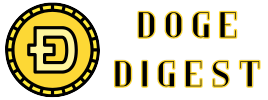Understanding Cloud Wallet Technology and Its Core Features
At the heart of cloud wallet technology lies the seamless fusion of convenience and security. These wallets operate on cloud servers, enabling users to access their digital assets anytime and anywhere without the constraints of physical devices. Instead of storing credentials locally, the wallet leverages encrypted cloud storage, reducing the risks associated with device loss or theft. This architecture not only simplifies the management of multiple cryptocurrency or digital asset accounts but also streamlines transaction processes through instant synchronization across platforms.
Core features that define cloud wallets include:
- Multi-device accessibility – effortlessly switch between smartphones, tablets, and desktops.
- Automatic backups – cloud storage ensures your assets and data remain preserved even if a device is compromised.
- Advanced encryption – robust security measures like end-to-end encryption protect user privacy and funds.
- Integration with services – easy linking with exchanges, decentralized apps, and payment gateways.
To better visualize how these features stack up, consider the table below showcasing key attributes often evaluated by users when selecting a cloud wallet:
| Feature | Benefit | Potential Limitation |
|---|---|---|
| Cloud-Based Storage | Access from multiple devices seamlessly | Dependent on Internet connectivity |
| Encryption Standards | Ensures data confidentiality and protection | Complexity may affect speed |
| Backup & Recovery | Minimizes risk of data loss | Recovery processes can be technical |
| Third-Party Integrations | Expands usability within digital ecosystems | Potential vulnerability via APIs |
Exploring the Advantages of Cloud Wallets for Users and Businesses
Cloud wallets have transformed digital transactions by offering unparalleled convenience. For users, the ability to access funds anytime and anywhere eliminates the hassle of carrying physical cards or cash. The synchronization across multiple devices ensures that all payment methods are at one’s fingertips, streamlining day-to-day financial management. Moreover, integrated budgeting tools within many cloud wallets empower users to monitor spending habits and savings goals in real-time.
Businesses, on the other hand, benefit from faster checkouts and reduced transaction costs. Accepting payments through cloud wallets can lead to higher customer satisfaction and increased sales by catering to the growing demand for contactless and mobile payments. Additionally, the data analytics offered by cloud wallet platforms provide valuable insights into consumer behavior, enabling companies to tailor marketing strategies and enhance customer engagement.
Below is a breakdown of key advantages for both users and businesses:
- Users: Seamless accessibility, enhanced security features, real-time expense tracking
- Businesses: Lower operational costs, accelerated payment processing, enriched customer data
| Feature | User Benefit | Business Benefit |
|---|---|---|
| 24/7 Access | Instant payments anytime | Increased sales opportunities |
| Security Protocols | Safety from fraud | Reduced chargebacks |
| Integrated Analytics | Personalized budgeting | Targeted promotions |
Identifying Potential Risks and Security Challenges in Cloud Wallets
Cloud wallets, while revolutionary in simplifying digital transactions, introduce a unique landscape of risks that users must navigate carefully. One of the primary concerns is data breaches, where unauthorized parties might gain access to sensitive financial information stored remotely. Unlike traditional wallets, a compromise in cloud infrastructure can expose thousands of users simultaneously, amplifying the impact of security failures.
Moreover, the dependence on internet connectivity and third-party providers brings forth challenges related to service availability and data integrity. Outages or technical malfunctions on the provider’s end can deny access to funds when they are needed most. Coupled with that is the risk of man-in-the-middle attacks during data transmission, which can intercept credentials if encryption protocols are weak or improperly implemented.
It’s also essential to consider social engineering and phishing tactics targeted at cloud wallet users. Cybercriminals often exploit trust by mimicking wallet interfaces or sending fraudulent notifications to steal login details. Below is a quick overview of common risks and their potential consequences:
| Risk | Description | Impact |
|---|---|---|
| Data Breach | Unauthorized access to stored financial data | Loss of funds and personal information |
| Service Downtime | Wallet inaccessible due to server failures | Inability to perform transactions |
| Phishing Attacks | Fake interfaces to capture login credentials | Account takeover and fund theft |
| Man-in-the-Middle | Intercepted data in transit | Compromised transaction security |
- Regularly updating security software helps fortify defenses against emerging threats.
- Enabling two-factor authentication (2FA) adds an essential layer of protection beyond passwords.
- Choosing providers with transparent security policies ensures greater accountability and trust.
Best Practices for Safely Managing Your Cloud Wallet
When it comes to protecting your digital assets, vigilance is your strongest ally. Start by enabling multi-factor authentication (MFA) on your cloud wallet accounts. This extra layer of security significantly reduces the risk of unauthorized access, even if your password is compromised. Additionally, always use complex and unique passwords, preferably managed through a reliable password manager, to avoid common pitfalls like repetition or weak credentials.
Regularly updating your software and wallet apps plays a key role in maintaining security. Developers frequently release patches that close vulnerabilities and improve defenses. Ignoring updates is akin to leaving your front door unlocked. Make it a habit to verify the legitimacy of update notifications and download updates only from official sources to steer clear of phishing scams.
Backing up your seed phrases or private keys securely cannot be overstated. Store these critical details offline in a protected environment-consider using a fireproof safe or a secure physical location. Avoid digital copies on cloud storage or unencrypted devices to prevent interception. Below is a simple reminder of dos and don’ts for managing your backups:
| Do | Don’t |
|---|---|
| Write your seed phrase on paper | Store backups in plain text files |
| Use encrypted USB drives for digital backups | Share your keys with anyone |
| Keep multiple copies in different secure locations | Take photos of your keys with smartphones |
Future Trends and Recommendations for Adopting Cloud Wallet Solutions
As technology evolves, cloud wallet solutions are expected to integrate advanced security features such as biometric authentication, AI-driven fraud detection, and decentralized encryption methods. These enhancements will not only bolster user confidence but also address some of the lingering concerns about data privacy and unauthorized access. Furthermore, interoperability between different cloud wallets and traditional financial systems will become more seamless, paving the way for a cohesive digital payment landscape.
For businesses and users looking to adopt cloud wallet systems, a strategic approach is crucial. Prioritizing platforms with transparent user policies, continuous security updates, and multi-factor authentication can significantly mitigate risks. Additionally, staying informed about regulatory developments and compliance standards worldwide will prepare users for smoother transitions as regional laws evolve. Emphasizing user education on safe cloud wallet practices can also create a more resilient ecosystem.
Below is a quick overview to consider when evaluating cloud wallet providers:
| Key Factor | What to Look For | Future-proof Features |
|---|---|---|
| Security | End-to-end encryption, biometric options | AI-powered threat detection |
| Usability | Intuitive interface, multi-device sync | Cross-platform accessibility |
| Compliance | Regulatory certification, data sovereignty | Adaptive compliance automation |
| Support | 24/7 customer service, robust FAQs | AI chatbots & proactive alerts |
Q&A
Q&A: Cloud Wallets – Balancing Benefits and Drawbacks Q1: What exactly is a cloud wallet? A cloud wallet is a digital platform that stores your cryptocurrencies or digital assets on remote servers, accessible via the internet. Unlike hardware or paper wallets, which keep your keys offline, cloud wallets manage your private keys online, often providing ease of access and convenience. Q2: Why are cloud wallets gaining popularity? Their popularity stems from user-friendliness and accessibility. Users can access their assets from any device with internet connectivity, often without juggling complex security protocols. Many cloud wallets also integrate with exchanges and offer additional services like portfolio tracking and instant transactions, making them attractive for everyday crypto users. Q3: What are the main advantages of using a cloud wallet? The primary benefits include convenience, seamless access, and often, enhanced usability for beginners. Cloud wallets enable quick recovery options in case of lost passwords and can incorporate multi-signature or biometric authentication to bolster security. They’re also ideal for users who prefer not to deal with managing private keys directly. Q4: Are there any significant risks or drawbacks? Yes. Storing private keys online inherently carries security risks-cloud wallets can be vulnerable to hacking, phishing attacks, and service outages. Additionally, by entrusting control to a third party, users may face issues related to privacy and custodianship. If the wallet service were compromised or shut down, recovering funds could become problematic. Q5: How do cloud wallets compare to hardware wallets in terms of security? Hardware wallets keep private keys offline, making them significantly less susceptible to remote hacking attempts. Cloud wallets, while convenient, rely heavily on the security measures of the provider and the user’s own online safety practices. Thus, hardware wallets are generally considered more secure but less convenient. Q6: Can cloud wallets be used safely? Absolutely, with caution. Choosing reputable providers with strong security protocols, enabling two-factor authentication, regularly updating passwords, and maintaining personal cybersecurity hygiene can mitigate many risks. However, users should always be aware that convenience may come at some expense to control and security. Q7: Who should consider using a cloud wallet? Cloud wallets are suitable for casual users, beginners, or those who prioritize accessibility and simplicity over maximum security. They’re also great for people who trade frequently or need quick access across multiple devices. Conversely, large holders or those concerned about long-term cold storage may prefer hardware wallets. Q8: What does the future hold for cloud wallets? As blockchain and security technologies evolve, cloud wallets are likely to become more secure and feature-rich. Innovations like decentralized custody solutions, enhanced encryption, and integration with DeFi platforms could strike a better balance between convenience and safety, making cloud wallets an even more integral part of digital asset management.Balancing convenience and control is the art of cloud wallets-embracing their ease while respecting the trade-offs they entail.







